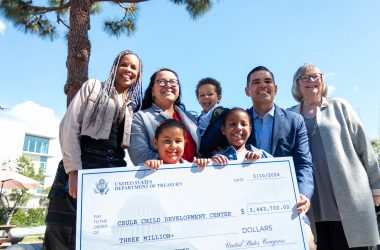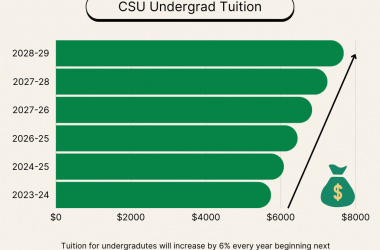After President Barack Obama’s March 9 executive order easing limitations on stem cell research, Cal State Long Beach received $1,337,700 for cell studies.
Lisa Klig, a biological sciences professor and adviser of the biotechnology certificate program, said the program is glad to be awarded a Bridges to Stem Cell Research grant from the California Institute for Regenerative Medicine (CIRM).
This funding comes after the passage of Proposition 71 in 2004 which created CIRM in order to distribute almost $3 million for stem cell research, $16 million of which was granted to 11 California State University campuses March 23.
Klig and biological sciences professor Elizabeth Eldon said they have three goals for CSULB’s biotechnology program.
The first goal is to recruit scientists into the workforce and to educate the public about the importance of stem cells in medicine, biology and technology. The second goal is to prepare students for jobs in stem cell research. Finally, the third goal is to keep stem cell training program graduates in California by offering them internships that could lead to long-term jobs.
The stem cell training program will invite up to 10 biological sciences and chemistry students to intern during their second year in the program. There are currently 2,179 students enrolled in the biology and chemistry departments, according to the Institutional Research and Assessment On Demand Reporting.
Students who are accepted to CSULB’s stem cell training option of the biotechnology certificate program will take a stem cell techniques course at Children’s Hospital of Orange County, and then go on 10-month internships in stem cell laboratories at either the cancer center City of Hope or UC Irvine, Klig said. Students will have mentors throughout the program, according to the CIRM website.
Additionally, stem cell research will be covered in CSULB’s lower division, general education lecture course “Introduction to Human Diseases,” Klig said. Such a course will also be offered at a local community college to draw students to CSULB’s stem cell training program, Klig added.
“There is a need for scientists and technicians trained in stem cell research, and there should be new jobs opening particularly with the new federal policies on stem cells,” Klig said.
Embryonic stem cells are cells that can become any kind of tissue or type of cell in the body, such as skin, heart tissue, nerves, intestines, etc. There are other types of stem cells, such as skin or bone marrow stem cells.
The best source of stem cells come from human embryos since these cells can become any kind of tissue more easily compared to other sources — a characteristic known as “pluriponent.” Embryonic cells can create pluriponent cell cultures that never stop growing, which are known as cell lines or colonies. These cells can be stored or frozen.
Eight years ago the Bush administration limited the type of stem cell research that could be done. Researchers were able to study existing lines of embryonic stem cells, but could not create new lines because by creating new colonies the embryos must be destroyed.
Researchers were allowed to create new skin and other nonembryonic stem cell lines, which did not conflict with the Bush administration’s more conservative abortion policies.
Scientists and doctors want to use embryonic stem cells for two major reasons. The study of stem cells can clarify what causes birth defects and cancer, and the use of stem cells in medical therapies could cure common diseases such as Parkinson’s Disease and diabetes, according to the NIH website.
Some researchers say stem cells may someday be used to treat catastrophic injuries, such as spinal-cord damage, according to a March 9 article in the New York Times.
There are currently 21 fully developed cell lines available to researchers worldwide and, according to Klig, more cell lines will be developed in the near future.
Scientists can get stem cell lines from the National Stem Cell Bank or the NIH.
For further information about the CSULB certificate program in biotechnology or the CIRM grant, contact Klig at (562) 985-2424 or by e-mail at [email protected]. Visit stemcells.nih.gov for more information about stem cells.



